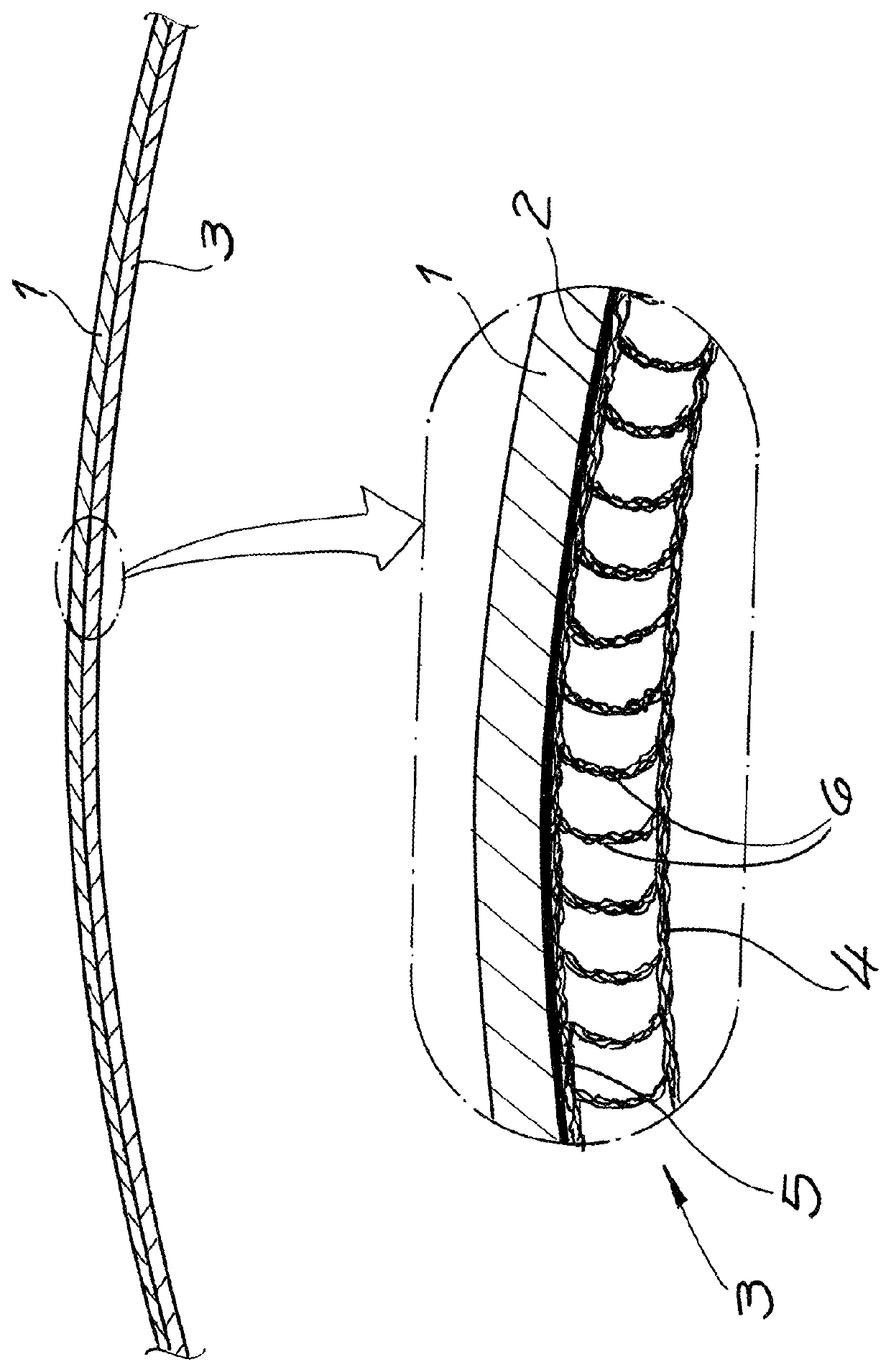Knit spacer fabric for use as interior vehicle trim
a technology for interior vehicles and spacer fabrics, applied in the field of spacer fabrics, can solve the problems of reducing affecting the service life of the vehicle, so as to reduce the amount of consumption and water contamination
- Summary
- Abstract
- Description
- Claims
- Application Information
AI Technical Summary
Benefits of technology
Problems solved by technology
Method used
Image
Examples
Embodiment Construction
[0055]As seen in the drawing a headliner of a vehicle is formed by a rigid substrate 1 and a spacer fabric 3 that is bonded to the substrate 1 as a knitted spacer fabric by an adhesive 2. The substrate 1 is shaped three-dimensionally by thermoshaping, for example, and is curved in the illustrated section. It lies against or forms a roof of passenger compartment.
[0056]The spacer fabric 3 has a first flat textile layer 4, a second flat textile layer 5, and spacer yarns 6 that join the spacer layers 4 and 5. It can be seen here that the first textile layer 4 forms a visible surface of the headliner as interior trim.
[0057]In order to ensure an especially uniform appearance on the corresponding surface, in the context of the invention the first textile layer 4 and the spacer yarns 6 are made entirely of polymeric multifilament yarns.
[0058]In the illustrated embodiment, the entire spacer fabric 3 consists of a single yarn type in the form of a multifilament yarn having a fineness of 76 dt...
PUM
| Property | Measurement | Unit |
|---|---|---|
| thickness | aaaaa | aaaaa |
| thickness | aaaaa | aaaaa |
| thickness | aaaaa | aaaaa |
Abstract
Description
Claims
Application Information
 Login to View More
Login to View More - R&D
- Intellectual Property
- Life Sciences
- Materials
- Tech Scout
- Unparalleled Data Quality
- Higher Quality Content
- 60% Fewer Hallucinations
Browse by: Latest US Patents, China's latest patents, Technical Efficacy Thesaurus, Application Domain, Technology Topic, Popular Technical Reports.
© 2025 PatSnap. All rights reserved.Legal|Privacy policy|Modern Slavery Act Transparency Statement|Sitemap|About US| Contact US: help@patsnap.com

